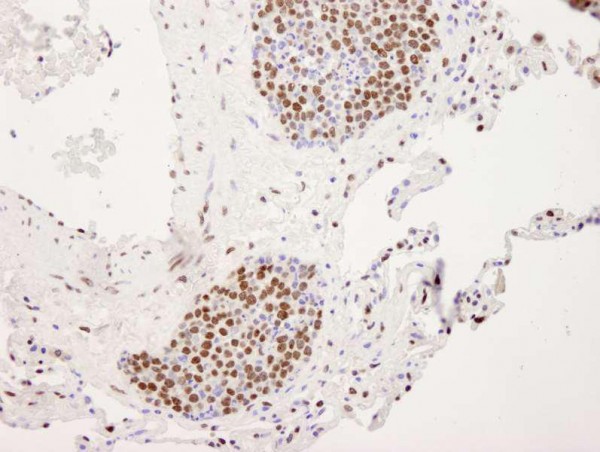Cookie preferences
This website uses cookies, which are necessary for the technical operation of the website and are always set. Other cookies, which increase the comfort when using this website, are used for direct advertising or to facilitate interaction with other websites and social networks, are only set with your consent.
Configuration
Technically required
These cookies are necessary for the basic functions of the shop.
"Allow all cookies" cookie
"Decline all cookies" cookie
CSRF token
Cookie preferences
Currency change
Customer-specific caching
FACT-Finder tracking
Individual prices
Selected shop
Session
Comfort functions
These cookies are used to make the shopping experience even more appealing, for example for the recognition of the visitor.
Note
Show the facebook fanpage in the right blod sidebar
Statistics & Tracking
Affiliate program
Conversion and usertracking via Google Tag Manager
Track device being used

| Item number | Size | Datasheet | Manual | SDS | Delivery time | Quantity | Price |
|---|---|---|---|---|---|---|---|
| IHC-00089-T | 10 µl (2500 ng) | - |
2 - 8 business days* |
164.00€
|
|||
| IHC-00089 | 100 µl (25 µg) | - |
2 - 8 business days* |
623.00€
|
If you have any questions, please use our Contact Form.
You can also order by e-mail: info@biomol.com
Larger quantity required? Request bulk
You can also order by e-mail: info@biomol.com
Larger quantity required? Request bulk
Protein function: DNA- and RNA-binding protein involved in several cellular processes such as... more
Product information "Anti-hnRNP-U (IHC)"
Protein function: DNA- and RNA-binding protein involved in several cellular processes such as nuclear chromatin organization, telomere-length regulation, transcription, mRNA alternative splicing and stability, Xist-mediated transcriptional silencing and mitotic cell progression (PubMed:10490622, PubMed:18082603, PubMed:19029303, PubMed:22325991, PubMed:25986610, PubMed:28622508). Plays a role in the regulation of interphase large-scale gene-rich chromatin organization through chromatin- associated RNAs (caRNAs) in a transcription-dependent manner, and thereby maintains genomic stability (PubMed:1324173, PubMed:8174554, PubMed:28622508). Required for the localization of the long non-coding Xist RNA on the inactive chromosome X (Xi) and the subsequent initiation and maintenance of X-linked transcriptional gene silencing during X-inactivation. Plays a role as a RNA polymerase II (Pol II) holoenzyme transcription regulator (PubMed:8174554, PubMed:9353307, PubMed:10490622, PubMed:15711563, PubMed:19617346, PubMed:23811339). Promotes transcription initiation by direct association with the core-TFIIH basal transcription factor complex for the assembly of a functional pre-initiation complex with Pol II in a actin-dependent manner (PubMed:10490622, PubMed:15711563). Blocks Pol II transcription elongation activity by inhibiting the C-terminal domain (CTD) phosphorylation of Pol II and dissociates from Pol II pre-initiation complex prior to productive transcription elongation (PubMed:10490622). Positively regulates CBX5-induced transcriptional gene silencing and retention of CBX5 in the nucleus (PubMed:19617346). Negatively regulates glucocorticoid-mediated transcriptional activation (PubMed:9353307). Key regulator of transcription initiation and elongation in embryonic stem cells upon leukemia inhibitory factor (LIF) signaling. Involved in the long non-coding RNA H19-mediated Pol II transcriptional repression (PubMed:23811339). Participates in the circadian regulation of the core clock component ARNTL/BMAL1 transcription. Plays a role in the regulation of telomere length (PubMed:18082603). Plays a role as a global pre-mRNA alternative splicing modulator by regulating U2 small nuclear ribonucleoprotein (snRNP) biogenesis (PubMed:22325991). Plays a role in mRNA stability (PubMed:17174306, PubMed:17289661, PubMed:19029303). Component of the CRD-mediated complex that promotes MYC mRNA stabilization (PubMed:19029303). Enhances the expression of specific genes, such as tumor necrosis factor TNFA, by regulating mRNA stability, possibly through binding to the 3'- untranslated region (UTR) (PubMed:17174306). Plays a role in mitotic cell cycle regulation (PubMed:21242313, PubMed:25986610). Involved in the formation of stable mitotic spindle microtubules (MTs) attachment to kinetochore, spindle organization and chromosome congression (PubMed:21242313). Phosphorylation at Ser- 59 by PLK1 is required for chromosome alignement and segregation and progression through mitosis (PubMed:25986610). Contributes also to the targeting of AURKA to mitotic spindle MTs (PubMed:21242313). Binds to double- and single-stranded DNA and RNA, poly(A), poly(C) and poly(G) oligoribonucleotides (PubMed:1628625, PubMed:8068679, PubMed:8174554, PubMed:9204873, PubMed:9405365). Binds to chromatin-associated RNAs (caRNAs) (PubMed:28622508). Associates with chromatin to scaffold/matrix attachment region (S/MAR) elements in a chromatin-associated RNAs (caRNAs)-dependent manner (PubMed:7509195, PubMed:1324173, PubMed:9204873, PubMed:9405365, PubMed:10671544, PubMed:11003645, PubMed:11909954, PubMed:28622508). Binds to the Xist RNA (PubMed:26244333). Binds the long non-coding H19 RNA (PubMed:23811339). Binds to SMN1/2 pre-mRNAs at G/U-rich regions (PubMed:22325991). Binds to small nuclear RNAs (snRNAs) (PubMed:22325991). Binds to the 3'-UTR of TNFA mRNA (PubMed:17174306). Binds (via RNA-binding RGG-box region) to the long non-coding Xist RNA, this binding is direct and bridges the Xist RNA and the inactive chromosome X (Xi). Also negatively regulates embryonic stem cell differentiation upon LIF signaling. Required for embryonic development. [The UniProt Consortium]
| Keywords: | Anti-p120, Anti-SAF-A, Anti-pp120, Anti-GRIP120, Anti-hnRNP U, Anti-Scaffold-attachment factor A, Anti-Nuclear p120 ribonucleoprotein, Anti-Heterogeneous nuclear ribonucleoprotein U |
| Supplier: | Bethyl Laboratories |
| Supplier-Nr: | IHC-00089 |
Properties
| Application: | IHC |
| Antibody Type: | Polyclonal |
| Conjugate: | No |
| Host: | Rabbit |
| Species reactivity: | human, mouse (Expected: rat, bovine, dog, horse, rabbit, guinea pig_10141, pig, panda, orangutan, monkey, gorilla, chimpanzee, crab-eating macaque) |
| Immunogen: | synthetic peptide. The epitope recognized by IHC-00089 maps to a region between residue 450 and 500 of human Heterogeneous Nuclear Ribonucleoprotein U using the numbering given in entry NP_114032.1(GeneID 3192). |
| Format: | Antigen Affinity Purified |
Database Information
| KEGG ID : | K12888 | Matching products |
| UniProt ID : | Q00839 | Matching products |
| Gene ID | GeneID 3192 | Matching products |
Handling & Safety
| Storage: | +4°C |
| Shipping: | +4°C (International: +4°C) |
Caution
Our products are for laboratory research use only: Not for administration to humans!
Our products are for laboratory research use only: Not for administration to humans!
Information about the product reference will follow.
more
You will get a certificate here
Viewed







